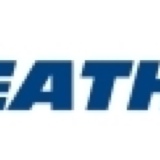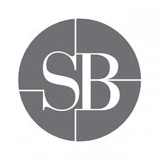Information
-
Document No.
-
Audit Title
-
Client / Site
-
Conducted on
-
Prepared by
-
Location
-
Personnel
Administrative
Part 1 - Administration
-
Regular safety inspections conducted and reported
-
Systems in place to monitor and review safety measures
-
Staff adequately trained in laboratory safety procedures
-
Emergency response procedures in place and understood
-
Qualified first aid officer on site
-
First aid kits easily accessible and in prominent position
-
First aid signage - posters, directional arrows prominently displayed
-
First aid kits up to date
-
Appropriate safety and warning placarding clearly visible
-
Accident/incident reporting and recording systems in place
-
Suitable protective clothing available
-
Storage and consumption of food and drink prohibited
-
Mouth pipetting prohibited
-
'No Smoking' signs prominently displayed
-
Pressure vessels certified and certificates clearly visible
-
Standard Operating Procedures (SOPs) readily available understood and being followed
-
Risk management process in place and being undertaken
-
Adequate facilities available to perform tasks being undertaken
-
Security measures in place to restrict access to unauthorised persons
-
All manual handling hazards are identified
-
Risk assessments are carried out for all manual handling risks
-
Appropriate manual handling equipment is provided
-
Staff are trained to undertake the manual handling tasks associated with their work
-
Staff use correct manual handling techniques for tasks
-
Repetitive actions are minimised
-
Adequate space for use of appropriate manual handling techniques or mechanical aids
-
Work surfaces are set at an appropriate height for the tasks undertaken
-
Layout of work areas is suitable for tasks undertaken
-
Adequacy and serviceability of lifting devices/stacking aids/trolleys/handcarts etc
Environmental
Part 2 - Environmental
-
Waste management procedures in place
-
Waste types segregated and stored in a safe and correct manner
-
All stored waste packaged, labelled and inventoried appropriately
-
No broken or sharp edged glassware in use
-
Empty aerosol cans disposed of separately
-
Noise levels at an acceptable level
-
All lights working
-
Adequate lighting for tasks being performed
-
Acceptable atmospheric contamination levels (ie fumes, dust, vapour, etc)
-
Adequate ventilation
Housekeeping and Egress
Part 3 - Housekeeping and Egress
-
Floor clean, dry and free from slip/trip hazards
-
No accumulation of old equipment, stores, rubbish, etc
-
Shelving stable, free from extraneous material, not overloaded and not too high
-
Walkways free from obstruction
-
Exits and corridors clear of obstruction
-
Exit signs illuminated and clearly visible
-
Exit doors unlocked
-
No deadbolts, shot bolts or padlocks on emergency exit doors
-
Adequate number of exits
-
Emergency lighting installed and in operating condition
Fire Safety
Part 4 - Fire Safety
-
Fire alarms installed, operating and audible throughout laboratory
-
Suitable type fire extinguishers and fire blankets located, mounted and identified
-
Maintenance of fire extinguishers up to date
-
Maintenance of hose reels and hydrants up to date
-
Overhead fire sprinklers and/or thermal/smoke detectors clear of stores, obstructions and equipment
-
Fire sprinklers and detectors heads free from damage
-
Fire doors free from damage and obstructions
-
'In Case of Fire' instructions prominently displayed
-
Occupants know how to use fire fighting equipment
-
Occupants know what to do in case of fire
-
Fire drill conducted in last 12 months
Flammable Liquids
Part 5 - Flammable Liquids
-
Up to date inventory of all solvents stored in the laboratory
-
Material Safety Data Sheets (MSDSs) available for all solvents used and stored
-
Container labels correct and legible
-
Solvents stored in compatible containers
-
Solvents separated from corrosives
-
No excessive amounts of solvents stored and/or used (ie greater than 40litres)
-
Flammable liquids cabinet installed
-
Flammable liquids cabinet in good condition
-
Warning signs on cabinet legible
-
No flammable liquids stored in domestic refrigerators
Compressed Gases
Part 6 - Compressed Gases
-
MSDSs available for all compressed gases used
-
Gas name label on shoulder of cylinders clearly legible
-
Cylinders secured to wall,trolley or other permanent fixture by bracket or chain
-
Fuel cylinders separated from oxidising cylinders
-
Empty cylinders separated from full ones and clearly identified
-
Not in use acetylene cylinders stored outside of building
-
Cylinder valve closed when cylinder not in use
-
Adequate ventilation
-
Gas lines leak-tested regularly and users aware of testing procedure
-
Cylinders stored a minimum of three metres from an ignition source
-
Safety glasses available and accessible
Chemicals
Part 7 - Chemicals
-
Up to date inventory of all chemicals stored in the laboratory
-
MSDSs readily available for all hazardous substances stored or used
-
All chemicals and containers clearly labelled and complying with the Hazardous Substances Regulations
-
Chemicals stored in compatible containers
-
Chemical compatibility in storage areas (ie separation into dangerous goods classes)
-
Leakage of chemicals onto storage shelves prevented/controlled
-
Appropriate protective equipment worn when handling hazardous chemicals
-
Procedure in place for the handling of speciality chemicals (ie carcinogens, toxins etc)
-
Storage of chemicals in fume cupboards prohibited
-
Occupants of laboratory know what to do in the case of a chemical spill
Fume Cupboards
Part 8 - Fume Cupboards
-
Electrical services located outside the chamber
-
Emergency isolation switches available and clearly identified
-
Fire Sprinklers and detectors fitted where applicable
-
Warning sign indicated that only 2.5 litres of flammable liquid is allowed in the chamber at any time
-
Fume scrubbers installed where applicable (eg perchloric acid use)
-
Carbon dioxide fire extinguishers nearby but not less than one metre from cupboard
-
Average face velocity a minimum of 0.5 metres peruse one with sash in all positions
-
Full performance test performed within the last six months
Biological Safety
Part 9 - Biological Safety
-
MSDSs readily available for any hazardous substances used in the laboratory
-
Contaminated waste procedures adopted and adhere to
-
Sharps (needles, syringes, pipettes etc) procedures adopted and adhered to
-
Risk group category and containment procedures adopted and adhere to
-
Disposable gloves available
-
Adequate biohazard and sterile work cabinets available
-
Biohazard cabinets and sterile work cabinets inspected and certified annually
-
Appropriate decontamination of work surfaces practiced
-
Containers correctly labelled and legible
-
Aerosol production minimised and contained
-
Occupants of laboratory know what to do in the case of emergency involving hazardous biological incident
Radiation Safety
Part 10 - Radiation Safety
-
Up to date inventory of all radioactive materials stored in the laboratory
-
MSDSs readily available for labelled material
-
Specific areas designated and identified for radiation procedures
-
Laboratory design complies with AS2243.4 and NHMRC guidelines
-
Appropriate monitoring equipment readily available
-
Personnel and environmental monitoring procedures adopted and adhere to
-
Absorbent material and trays used to contain spills
-
Adequate and sufficient shielding available
-
Radioactive material securely and appropriately stored
-
Radioactive waste procedures adopted and adhered to
-
EPA licence held by all staff using radiation
-
Occupants of the laboratory know what to do in the case of an emergency involving radiation
Electrical Safety
Part 11 - Electrical Safety
-
In service safety inspection, testing and tagging of portable electrical equipment connected by flexible cord done in accordance with AS3760
-
Adequate power points available and unobstructed
-
Switches and power points in good working order and identify distribution panel and circuit breaker numbers
-
Emergency electrical power isolation switches installed, clearly identified and located near an exit
-
Residual current devices installed in distribution boards where required
-
All power leads in good repair and present no trip hazard
-
Use of double adapters prohibited and enforced
-
Any temporary wiring. Has action been taken to eliminate temporary wiring or replace it with permanent wiring?
-
Is excessive use of power boards and extension leads controlled/prohibited?
-
Carbon dioxide fire extinguisher adjacent to switchboard
-
Electrical ignition sources controlled in flammable environments
Machinery and Equipment
Part 12 - Machinery and Equipment
-
Operating instructions and safety signs adequate and clearly visible
-
Emergency stop switches clearly labelled and accessible
-
All safety glass areas clearly signposted
-
Safety glasses readily available
-
Machines and equipment free from obstruction
-
All moving parts, fan belts etc adequately guarded
-
Adequate distance between machines and equipment
-
Electrical and plumbing connections in good order
-
Carbon dioxide extinguisher readily available, where appropriate
Emergency Procedures
Part 13 - Emergency Procedures
-
Emergency procedures established, documented and understood by all occupants
-
Emergency exits clearly marked
-
Notices do emergency procedures prominently displayed
-
Emergency telephone number prominently displayed
-
Evacuation drill conducted in the last 12 months
Audit Conducted by
-
Auditors Signature
-
Auditors Signature
Audit Sent to
-
Supervisors Name











